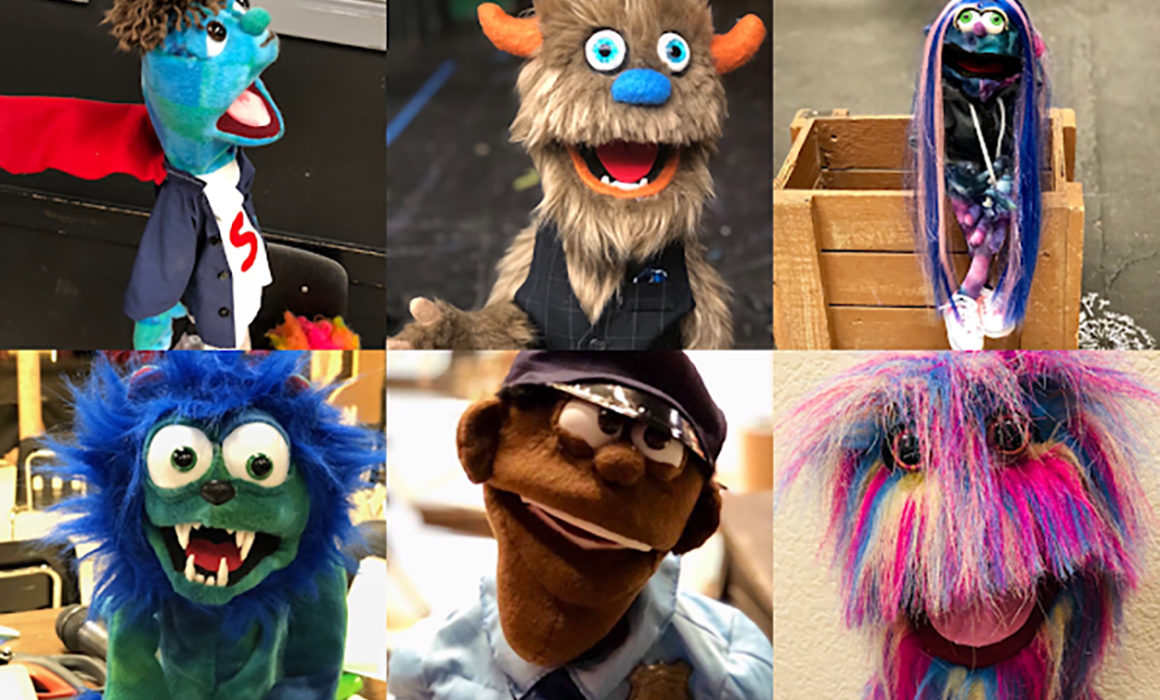
Elizabeth Choy had been a high school teacher for 11 years when a vocal injury rendered her unable to talk for more than 30 minutes at a time. The Fairfield-Suisun Unified Teachers Association member gave up teaching English but continued with her drama classes. She taught herself how to make puppets to use in her lessons.
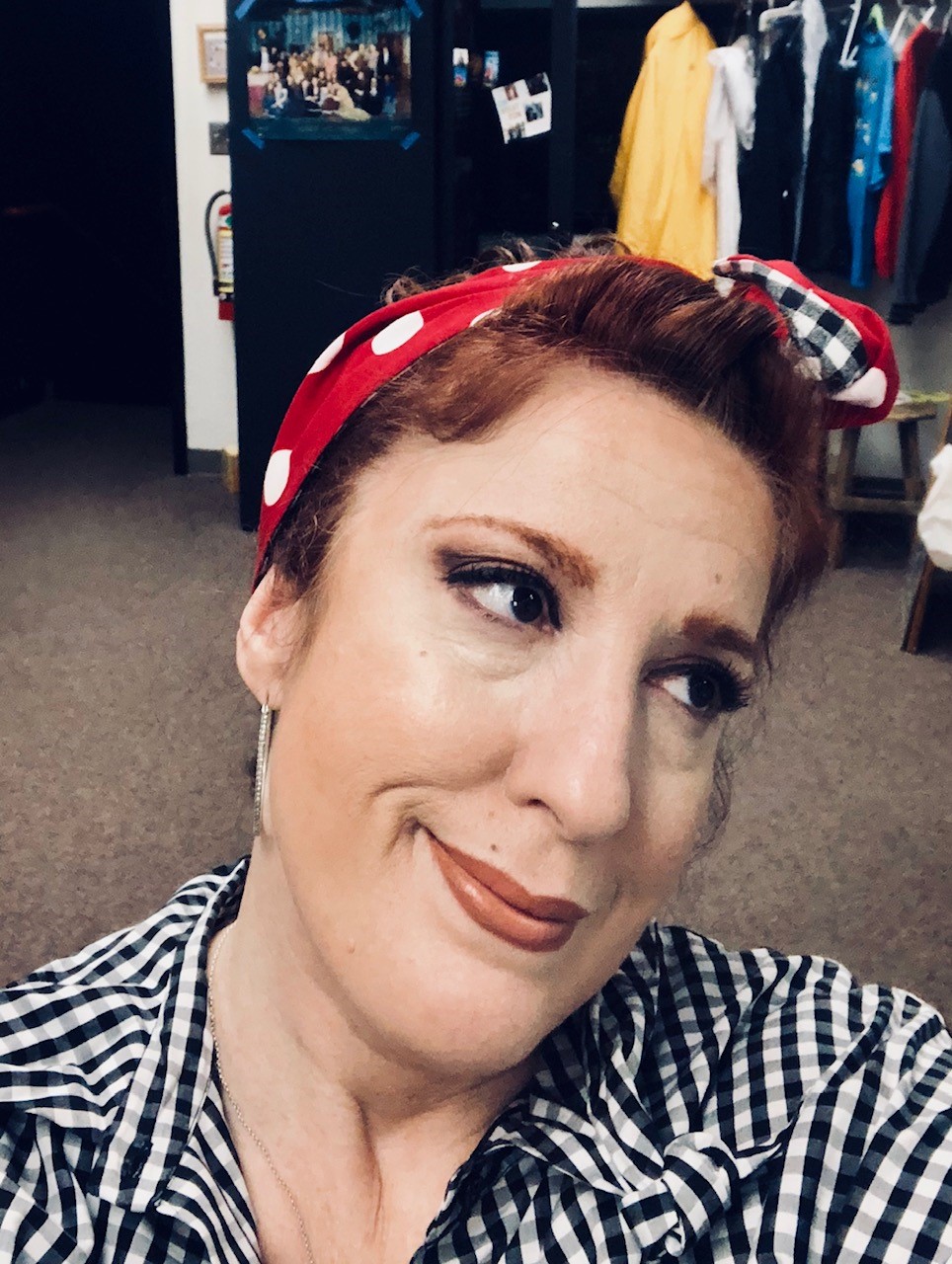
Elizabeth Choy
One day, one of her nonverbal students with special needs began to play with a puppet, opening and closing its mouth. “He started doing this every day,” Choy recalls. “He would mouth words while moving the puppet’s mouth. I would talk to him with another puppet. Eventually he started conversing with me and making eye contact.”
Choy has about five to eight kids with special needs in classes that range in size from 30 to 35. She realized that puppets would be helpful for all her students and incorporated making and using puppets into her curriculum. “Students have to develop their puppet’s character from the ground up,” she says, including “how they hold their body and head, their mannerisms and way of talking.”
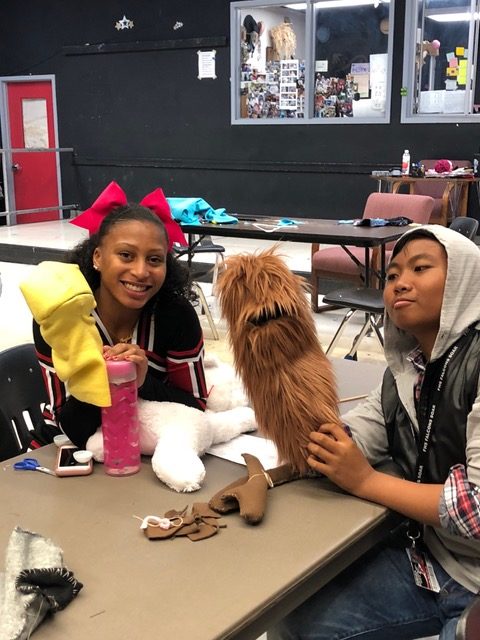
Choy’s students work on their puppets.
Performing with puppets lets shy and self-conscious students, as well as those with special needs, feel more relaxed about trying out “silly” voices and actions, Choy says, since everyone is looking at the puppet and not the student.
The puppetry unit of her curriculum runs about eight weeks. Choy created a pattern for students to make their puppets. Advanced students make bigger puppets that are operated by two or three people, encouraging teamwork.
For several years Choy spent between $300 and $800 a year out of her own pocket, since district funding for puppet materials wasn’t available. She tried DonorsChoose to help defray costs, then established Bok Choy’s Puppets (bokchoyspuppets.com), a nonprofit where she makes and sells puppets and donates proceeds to Fairfield High School’s theater program.
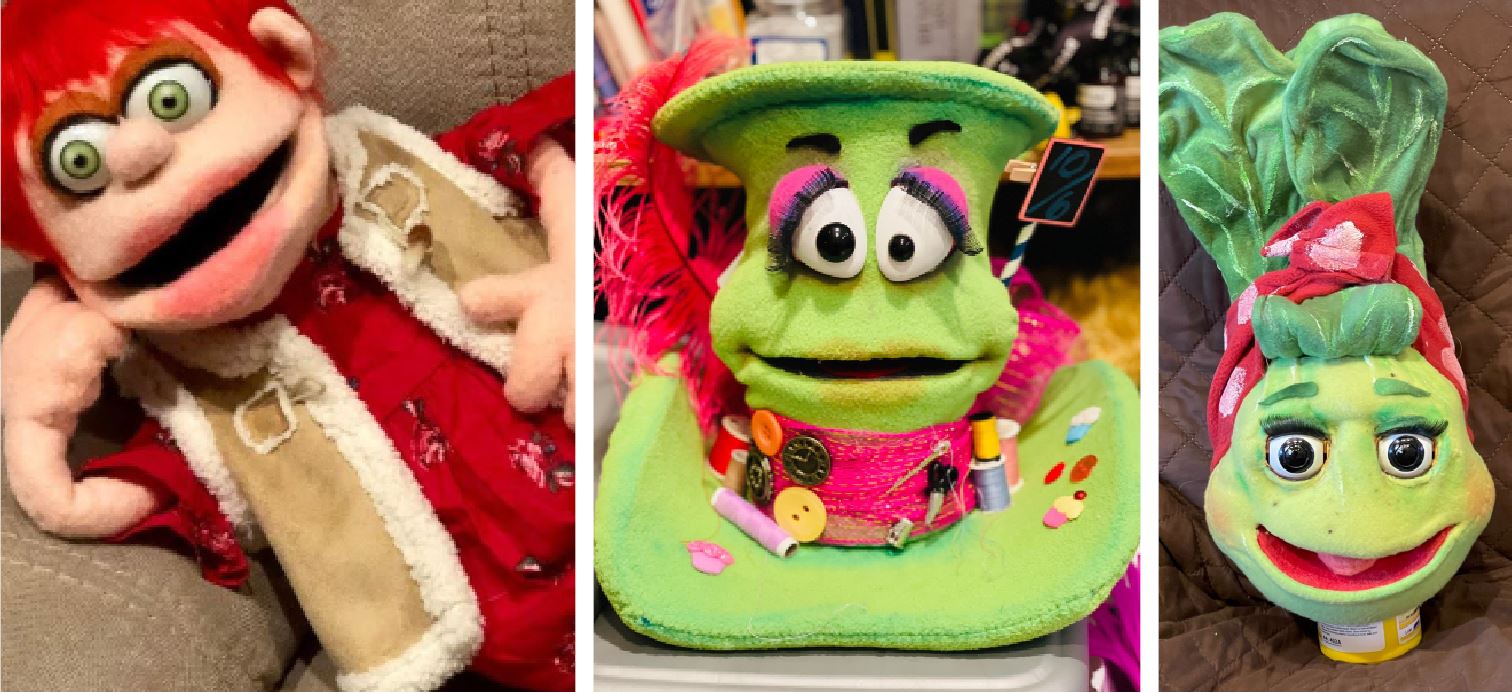
A few of Elizabeth Choy’s puppet creations, including her alter ego, Bok Choy (right).
Eager buyers, some from out of state, have commissioned Choy to make puppets of their dogs or even of themselves. She’s currently working on a baby puppet the size of a 3-year-old, at 23 inches tall. It can take her anywhere from two days to two weeks to produce a puppet. Prices depend on complexity and size; she offers fellow teachers an educator’s discount.
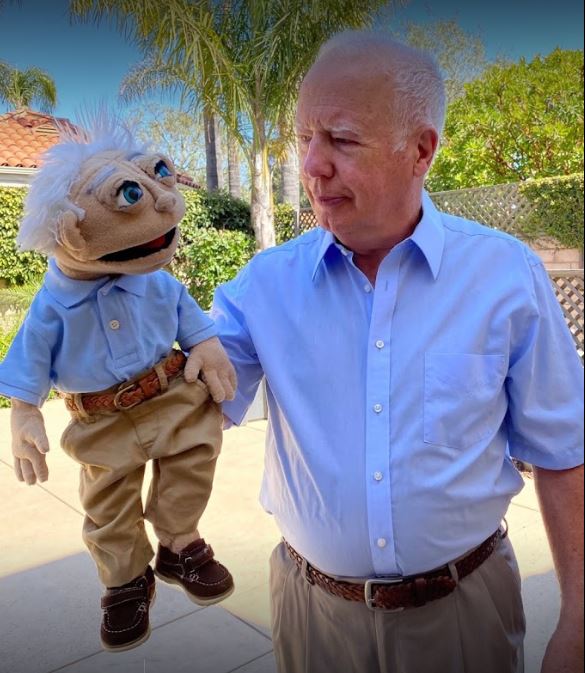
Ever wonder what you’d look like as a puppet?
Choy also donates puppets she and her students have made in class and in Fairfield High’s Drama Club to schools throughout her district. “My students can donate their puppet for extra credit,” she says. They are particularly popular with elementary teachers and counselors, especially with distance learning. She’s hoping to expand the donation program into neighboring districts.
Unfortunately, the pandemic hit Choy and her family hard. Not only did she contract COVID-19 for three debilitating weeks, but her husband did as well, and her grandmother died of it.
Because of distance learning, her puppetry instruction was scaled way back, as supplying students with the necessary materials to work on remotely was too difficult. Her other work, such as directing two school productions a year, has also been affected.
Despite the past year’s difficulties, Choy remains excited about what she’s been able to do for students and educators.
“We not only have puppets in education, but a school that teaches puppetry,” she says. “And I’m happy to provide free donated puppets or inexpensive ones to use in education.”
Puppets and SEL
By Justine Bruyère
It is important for children to share their feelings and express how they are making sense of their environment, particularly in this challenging time. Puppetry can engage elementary students in social-emotional learning and self-expression, invite children into conversations, and create safe spaces. Puppets can mirror student emotions, offer windows into new thoughts, and give students tools to better manage emotions.
If the thought of manipulating a puppet’s mouth, arms and body while delivering curriculum is overwhelming, start with a plush toy or a hand puppet with no moving mouth parts. Surprisingly, research has shown that young children’s belief in puppets is not typically attached to the teacher’s manipulation or even tone of voice, so don’t worry about disguising your voice. Instead, keep in mind the character you’ve created for the puppet — such as its personality, family and hobbies.
Begin with a text that openly shares emotion, such as Holdin Pott by Chandra Ghosh Ippen. Once the book has been shared and discussed, bring the puppet on to model honesty and vulnerability. In small groups, try asking questions that center on connecting with the characters, naming feelings, and reflecting and preparing for emotion. Let the puppet share its feelings openly; focus your answers on what children can do to manage anxiety and stress. Example:
Teacher: Have you ever felt like Holdin or other characters from this book? If so, which character? (connecting with the characters)
Puppet: I sometimes feel like Holdin when I watch the news and see my family members are sad.
Teacher: Do you sometimes have big feelings? What feelings do you have? (naming feelings)
Puppet: I feel sad and mad and worried. I don’t want people to feel sad. That makes my stomach hurt.
Teacher: What makes you feel better? (reflecting and preparing for emotion)
Puppet: I close my eyes and take deep breaths and I say nice things to myself in my mind.
Teacher: That’s good. It’s OK to be worried, but it’s not good to hold it in. How about we make a list? You can talk to one of your family about it. And sometimes stretching your body helps.
As students share, remember to affirm how they are feeling. Teachers (and puppets) need to create safe spaces for discussion by noting, “Expressing emotions isn’t always easy — even for adults.”
Sometimes students might ask the puppet questions that require more time to answer. The puppet might respond, “That’s something I wonder about, too. Who do you think I could ask?” Students can then help the teacher make a list of people they can talk to: a school counselor, a parent or grandparent, their teachers. Later, when a teacher has consulted available resources and had time to reflect, the puppet can return to the question.